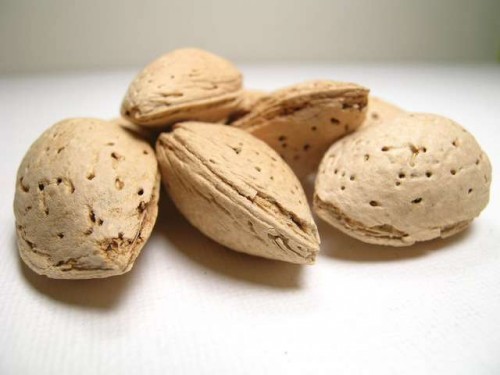|
ALMONDS >> Goods of life corresponding to the truths of interior natural good
 Another apparently very different fruit, but of the same genus with the peach, is the almond. Almonds are stones of peaches made sweet and eatable in themselves, but not encompassed with sweet pulp. They are not quickly perishable as is the juicy fruit; and in this respect, as well as in their dry nutritious quality, they partake of the character of the grains. Another apparently very different fruit, but of the same genus with the peach, is the almond. Almonds are stones of peaches made sweet and eatable in themselves, but not encompassed with sweet pulp. They are not quickly perishable as is the juicy fruit; and in this respect, as well as in their dry nutritious quality, they partake of the character of the grains.
Taking the peach as a type of works of affection, the seeds are principles of the duty of charity by which such works are multiplied. And almonds are these principles of charity lived from love for their own goodness. In peaches the seed is out of sight, and the sweet pulp appears to be the fruit. In almonds the seed is the fruit. In the works represented by peaches, there must be much expression of neighborly affection; but in the almonds there is no demonstrativeness, only a quiet doing of good works as a loved duty.
Peaches, from their perishableness and juiciness, suggest occasional kind hospitalities and other expressions of affectionate interest to friends and neighbors; the drier almonds represent quiet daily service from the duty of love. The priesthood of Aaron and his sons represented the ministry of the goodness of the Lord among men, and especially the living of a life of charity to lead men in the way to heaven. Therefore, when the rods of the several tribes were laid up before the Lord, Aaron’s rod, for the tribe of Levi, blossomed, and brought forth almonds, which represented the use to which he and his tribe were appointed.
The Hebrew name for the almond is “the watchful,” a name said to be conferred because its pretty pink flowers open their eyes so early in the winter, in which the peaches also resemble them. And, spiritually, the love of a life of charity is ever awake to its opportunities. The Lord said to Jeremiah, whom He was sending to reprove the people for their many sins, “What seest thou, Jeremiah?” And when Jeremiah replied “An almond rod,” the Lord explained it as an emblem of Himself as to His Divine watchfulness to lead men in the heavenly way: “Thou doest well in seeing; for watchful am I over my words to do them” (Jeremiah 1:11, 12).
Perhaps we can now see why the burners of the golden candlestick were “made like unto almonds”; for the candlestick is a representative of the Divine wisdom in the Church, and the ultimations of this are teachings of the duties of charity.
In the present which Jacob sent to Egypt by his sons, to the almonds were added “pistacia nuts.” In explaining this, Swedenborg says that the almonds represent “goods of life corresponding to the truths of interior natural good”; and the pistacia nuts, which he calls terebinth, represent “goods of life corresponding to the truths of exterior natural good” (Arcana Coelestia #5622). That is, the almonds are duties of real charity, and the pistacia nuts of natural pleasantness. The pistacia tree is related to the terebinth, which will be described presently; also to a large group of trees yielding varnishes, and to the poisonous rhus, which produces painful inflammation of the skin.
Author: JOHN WORCESTER 1875
|